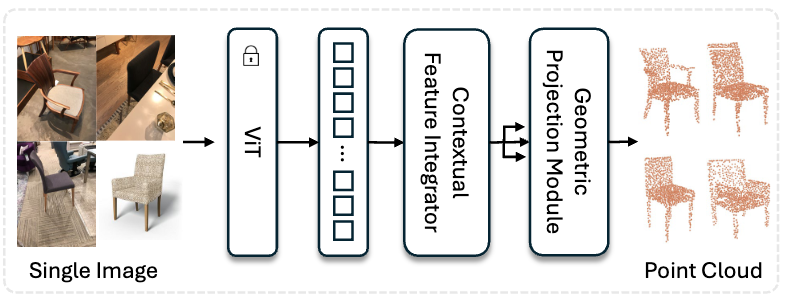RGB2Point is officially accepted to WACV 2025. It takes a single unposed RGB image to generate 3D Point Cloud. Check more details from the paper.
RGB2Point is tested on Ubuntu 22 and Windows 11. Python 3.9+ and Pytorch 2.0+ is required.
Assuming Pytorch 2.0+ with CUDA is installed, run:
pip install timm
pip install accelerate
pip install wandb
pip install open3d
pip install scikit-learn
python train.py
Please download 1) Point cloud data zip file, 2) Rendered Images, and 3) Train/test filenames.
Next, modify the downloaded 1), 2), 3) file paths to L#36, L#38, L#14 and L#16.
Download the model trained on Chair, Airplane and Car from ShapeNet.
https://drive.google.com/file/d/1Z5luy_833YV6NGiKjGhfsfEUyaQkgua1/view?usp=sharing
python inference.py
Change image_path and save_path in inference.py accrodingly.
We have added support for the BlendedMVS Dataset with a custom DataLoader located in the notebooks folder. This integration enhances multi-view stereo capability for 3D reconstruction.
If you find this paper and code useful in your research, please consider citing:
@InProceedings{Lee_2025_WACV,
author = {Lee, Jae Joong and Benes, Bedrich},
title = {RGB2Point: 3D Point Cloud Generation from Single RGB Images},
booktitle = {Proceedings of the Winter Conference on Applications of Computer Vision (WACV)},
month = {February},
year = {2025},
pages = {2952-2962}
}